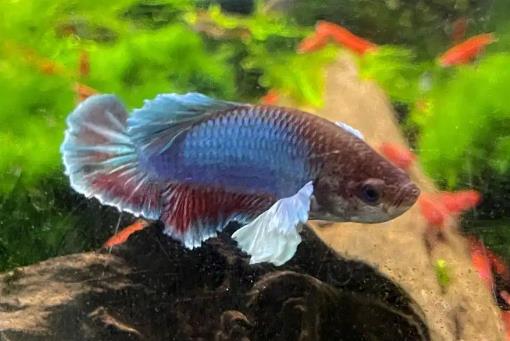The death of guppies can stem from various factors. Below is an analysis of key causes along with corresponding solutions:

I. Water Quality Issues (Most Common Cause)
Deteriorated water quality
Failure to change water promptly can lead to excessive ammonia levels (over 0.2ppm causes chronic poisoning). It is recommended to replace 1/3 of the water weekly, or shorten the interval to once every 3 days in summer.
Using unconditioned tap water directly (with chlorine levels >0.02mg/L) damages fish gills; let water sit for 2 days to remove chlorine first.
Planted tanks tend to be acidic, but guppies thrive in slightly alkaline water (pH 6.8-7.8).
Inadequate filtration
The filter flow rate should be at least 5 times the tank’s water volume. Clean filter media regularly to prevent toxin buildup.
II. Temperature Abnormalities
Temperature fluctuations
A daily temperature swing exceeding 3°C can cause mass deaths. When changing water, keep the temperature difference between new and old water within 2°C.
In autumn and winter, use a heater to maintain a constant temperature of 26-28°C to avoid large day-night fluctuations, which may trigger ich (white spot disease).
Extreme temperatures
Prolonged exposure to temperatures below 18°C weakens their immunity; temperatures above 32°C lead to oxygen depletion and accelerate bacterial growth.
III. Improper Feeding
Overfeeding: Adult guppies fed more than 3 times a day are prone to enteritis, while fry fed over 4 times may develop dropsy. Remove uneaten food within 30 minutes.
Nutritional monotony: Long-term reliance on dry food causes malnutrition. Supplement with live food like brine shrimp (disinfected first).
IV. Other Critical Factors
Stocking density
A general guideline is 1 adult guppy per liter of water. Overcrowding leads to oxygen deficiency, so an air pump should be added if needed.
Pathogen infections
Quarantine new fish for 14 days before introducing them to the main tank, and soak them in 0.5% saltwater for 3 days.
Common illnesses like bacterial fin rot or hexamita infection (characterized by darkening of the body) require immediate isolation and treatment.
V. Emergency Response Tips
If deaths occur, immediately:
Test water temperature, pH, and ammonia levels;
Replace 1/3 of the water and add nitrifying bacteria;
Stop feeding and monitor the remaining fish.
By systematically checking the above factors, the mortality rate can be significantly reduced.
